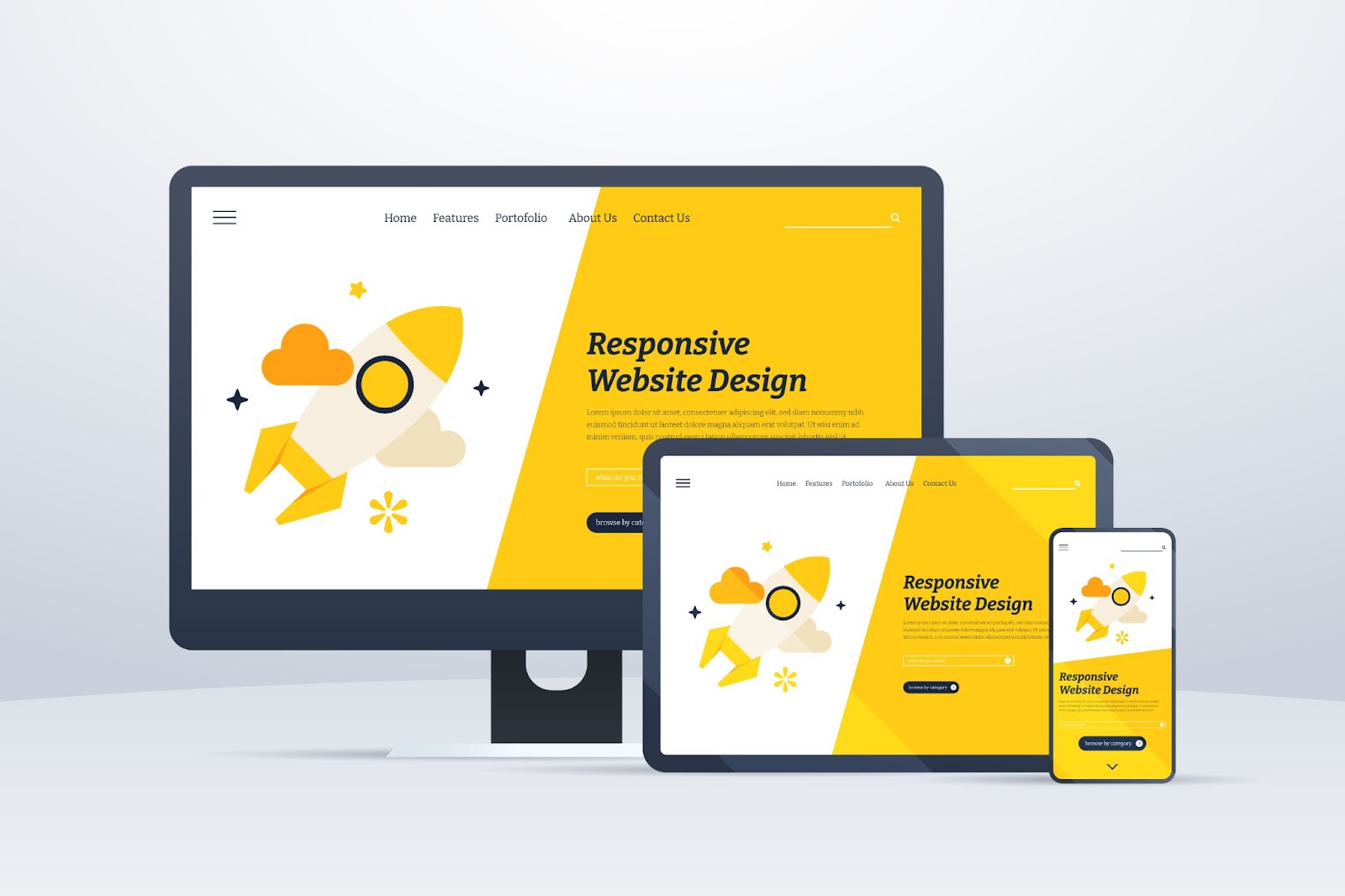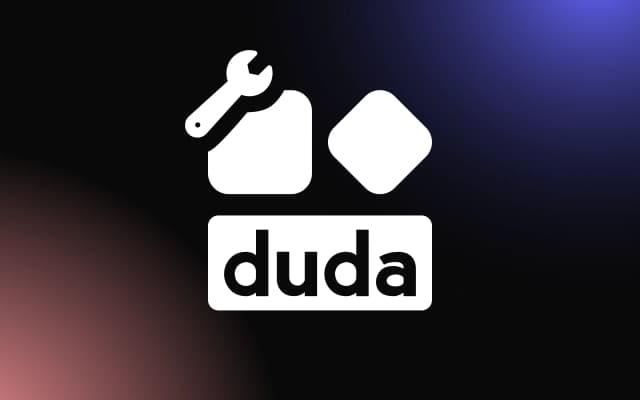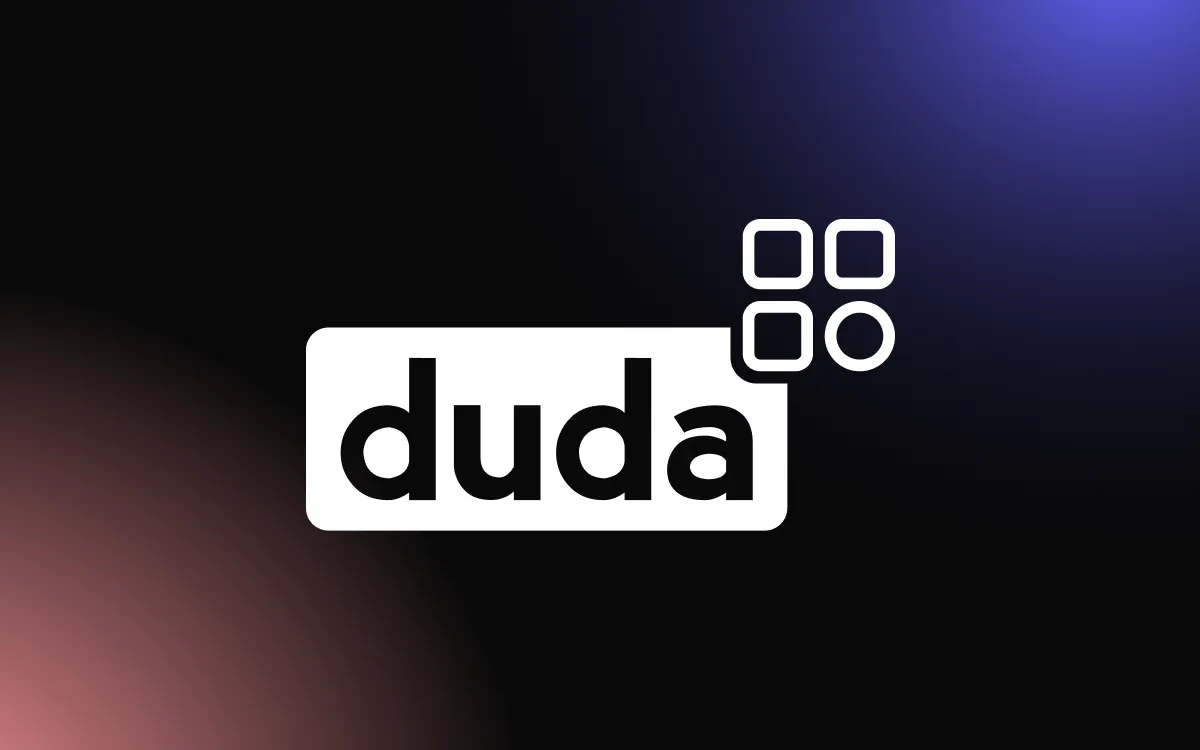
Duda websites are known for their design flexibility and user-friendly platform, but creating effective widgets that integrate seamlessly can be challenging.
Poorly designed widgets can disrupt the user experience, slow down your site, or fail to provide the desired functionality. By focusing on essential principles like usability, responsiveness, and aesthetics, you can create an effective widget that enhances your website's performance and engages your audience.
This article will guide you through the key principles for crafting seamlessly integrated Duda widgets.
Understanding the Role of Widgets in Duda Websites
Widgets are powerful tools that enhance the functionality and aesthetics of websites built on the Duda platform. Widgets allow users to add interactive features, streamline processes, and customize their websites to meet specific business needs. Whether it’s integrating social media, creating a dynamic product gallery, or adding a countdown timer, These integrations make these tasks simple and accessible, even for non-technical users.
A key advantage of these tools is their versatility. Widgets can serve a variety of purposes, from improving user engagement to simplifying backend management. For example, an appointment booking widget enables businesses to automate scheduling, while a live chat widget provides real-time support for customers. These features not only improve the overall user experience but also increase conversion rates by addressing user needs directly on the site.
Customization is another major strength of these tools. Users can modify their appearance and functionality to align with the brand's identity and website goals. Duda’s platform allows developers to create custom widgets tailored to unique requirements, such as niche business functionalities or personalized design elements. This flexibility ensures that websites remain visually cohesive while providing advanced capabilities.
Widgets are also essential for optimizing website performance. Many widgets come with responsive designs, ensuring they look and function well on all devices. Additionally, widgets like SEO tools, analytics integrations, and email marketing forms help website owners track performance and implement strategies to improve visibility and engagement.
Finally, the simplicity of adding these tools makes it a valuable feature for users at all skill levels. The drag-and-drop interface lets website owners quickly implement new functionalities without writing code. This ease of use, combined with the wide range of available widgets, makes the Duda platform a go-to choice for businesses aiming to build professional and dynamic websites.
In summary, a widget is an indispensable element of the platform, offering functionality, customization, and ease of use. By leveraging widgets effectively, businesses can create engaging, high-performing websites tailored to their specific needs.
What Makes a Duda Widget Unique?
Widgets stand out due to its ability to seamlessly integrate advanced functionality with ease of use, making it an indispensable tool for website customization. Designed specifically for the Duda platform, these widgets cater to diverse business needs by enabling users to add interactive features and improve site performance without requiring technical expertise.
One unique feature of these tools is their versatility.
Widgets can perform a wide range of tasks, from embedding dynamic content like videos, galleries, or maps to streamlining processes such as bookings, forms, or live chat. This adaptability allows website owners to enhance both user experience and backend efficiency, ensuring their sites remain competitive and engaging.
Another distinguishing factor is the level of customization available. These widgets can be tailored to match a brand’s identity and specific website requirements. Through the platform’s widget builder, users can design their own widgets or modify existing ones, adjusting elements like layouts, colors, and functionality. This customization ensures a cohesive design while meeting unique business goals.
The seamless integration with Duda’s drag-and-drop editor also makes these widgets exceptional. Users can easily add and arrange widgets within their website layout, previewing changes in real time. Furthermore, many widgets are responsive, ensuring they look and function perfectly on all devices.
In essence, a widget is unique because it combines flexibility, ease of use, and robust functionality in a way that enhances website design and performance, making it a standout feature of the Duda platform.
Why Widgets Are Essential for Website Customization
Widgets are essential for website customization because they provide the tools necessary to enhance functionality, streamline design, and create a unique user experience. By integrating widgets, website owners can add specialized features without the need for extensive coding, making customization accessible to both technical and non-technical users.
These tools allow businesses to tailor their websites to specific needs. For instance, an e-commerce site can use product sliders, shopping carts, and payment gateways to streamline customer journeys. Similarly, service-based businesses can add appointment scheduling, interactive maps, or contact forms to improve usability. These widgets make it simple to address customer demands while maintaining a polished, professional look.
The flexibility of widgets extends to design as well. With the ability to adjust colors, fonts, layouts, and placement, widgets ensure the website maintains a cohesive and branded appearance.
For example, Custom-designed tools can match the overall theme of the site while adding advanced features like animations or dynamic content displays.
Widgets also contribute to responsiveness and performance. Most modern widgets are optimized to function across devices, ensuring a consistent experience for desktop and mobile users alike. Additionally, they often integrate seamlessly with analytics tools, giving website owners valuable insights into user behavior and website performance.
In summary, Widgets are indispensable for website customization, offering the versatility and ease of use needed to create engaging, functional, and branded online experiences.
Key Design Principles for Effective Duda Widgets
Designing effective widgets requires careful attention to design principles that ensure functionality, usability, and aesthetic alignment with the overall website. Widgets are essential tools that enhance user experience, boost engagement, and streamline processes, making their design a critical aspect of website development.
1. Clarity and Simplicity
Effective widgets should be intuitive and easy to use. Simplicity in design ensures that users can interact with the widget without confusion. Avoid overloading the widget with excessive features or cluttered layouts.
Each component should have a clear purpose, and instructions should be minimal yet effective. For example, a contact form widget should focus on essential fields like name, email, and message, ensuring users complete it quickly and easily.
2. Consistency with Branding
Widgets should align with the website’s overall branding to create a seamless user experience. Use colors, fonts, and design elements that match the site’s aesthetic.
For instance, if your website uses a minimalist theme, the widget should follow the same style, avoiding overly decorative or mismatched elements. Consistency builds trust and reinforces brand identity.
3. Responsiveness and Adaptability
In today’s multi-device world, responsiveness is non-negotiable. A well-designed widget must adapt seamlessly to various screen sizes, including desktops, tablets, and smartphones.
Ensure that the widget’s layout, font sizes, and interactive elements scale appropriately for smaller screens. Test your widgets on multiple devices to confirm that they deliver a consistent and functional experience for all users.
4. Interactivity and Engagement
Interactivity is a key factor in keeping users engaged. Effective widgets offer dynamic features that encourage interaction, such as hover effects, animations, or live updates.
For instance, a countdown timer widget with real-time updates or a product slider with interactive navigation enhances user experience and encourages engagement.
5. Accessibility
A widget should be designed with accessibility in mind, ensuring that all users, including those with disabilities, can interact with it effectively. Use ARIA (Accessible Rich Internet Applications) labels, provide a clear contrast between text and background, and design with keyboard navigation in mind.
Accessibility compliance not only improves usability but also aligns with best practices and legal requirements.
6. Performance Optimization
An effective widget should load quickly and operate smoothly. Optimize the widget’s code and assets, such as images or scripts, to minimize load times.
Lightweight widgets ensure better overall website performance, improving user experience and search engine rankings. For example, compressing images within a gallery widget can significantly enhance loading speed without sacrificing quality.
7. Customization and Flexibility
A great widget offers customization options to meet different user needs. Allow users to adjust colors, fonts, and layouts or choose from various templates.
Flexibility ensures that the widget fits seamlessly into different website designs and adapts to varying business requirements. For example, an appointment booking widget should allow users to set custom time slots, input fields, and confirmation messages.
8. Clear Feedback and Error Handling
Providing immediate feedback is essential for usability. For instance, if a user submits a form, the widget should display a confirmation message or highlight errors in real time. Error handling should be user-friendly, with clear explanations of what went wrong and how to fix it. This ensures a smooth and frustration-free interaction.
9. Testing and Iteration
The design process for a Duda widget doesn’t end after deployment. Regular testing and user feedback are critical for identifying areas of improvement.
Conduct usability tests to ensure the widget functions as intended and aligns with user expectations. Iterating based on feedback helps refine the widget’s performance and design over time.
10. Integration with Analytics
Integrating analytics into your widget provides valuable insights into user behavior and engagement. For example, tracking interactions with a live chat widget or clicking on a call-to-action button helps measure its effectiveness.
These insights guide future improvements and ensure the widget delivers measurable value to the website.
Ensuring Widgets Are Responsive and Mobile-Friendly
Widgets must be responsive and mobile-friendly to provide a seamless experience across all devices. With a growing number of users accessing websites via mobile, ensuring your widgets adapt effectively to various screen sizes is essential for functionality, usability, and engagement.
Why Responsiveness Matters
Responsiveness ensures that widgets adjust dynamically to the screen size and orientation of the user’s device. A non-responsive widget can disrupt the website layout, making it difficult for users to interact with its features.
For example, if a booking widget is not optimized for smaller screens, users may struggle to input information or complete actions, leading to frustration and potential loss of engagement.
Key Design Elements for Responsiveness
- Fluid Layouts: Use flexible dimensions like percentages instead of fixed pixel values to ensure the Duda widget scales smoothly on various devices. For instance, a gallery widget should resize its images proportionally to fit smaller screens.
- Scalable Fonts and Buttons: Ensure text and clickable elements remain legible and functional on mobile. Fonts should adjust dynamically, and buttons should have enough padding for easy tapping.
- Viewport Meta Tag: Implement the viewport meta tag in your HTML to help the widget respond appropriately to screen size changes. <meta name="viewport" content="width=device-width, initial-scale=1.0">
Testing for Mobile Compatibility
Thorough testing is crucial for verifying that a Duda widget performs well on mobile devices. Use browser developer tools to simulate different screen sizes and orientations.
Additionally, test the widget on actual devices to identify issues that may not appear in simulations.
Mobile-Specific Enhancements
To make a Duda widget truly mobile-friendly, consider adding features tailored to mobile users. For example, simplify forms, reduce unnecessary steps, and ensure touch gestures like swiping or pinching work seamlessly.
Performance Optimization for Mobile
Minimize load times by optimizing assets such as images and scripts. A lightweight Duda widget ensures smooth performance, even on slower mobile networks. Tools like lazy loading for images or deferring non-essential scripts can further enhance performance.
By prioritizing responsiveness and mobile-friendliness, your Duda widget will deliver a consistent, enjoyable experience for users across all devices, boosting engagement and usability.
Maintaining Seamless Integration with Duda Features
A well-designed Duda widget must integrate seamlessly with the platform’s features to enhance functionality and provide a smooth user experience. The Duda platform is known for its robust, user-friendly tools, and ensuring your widget complements these features is essential for maximizing its potential.
Leverage Duda’s Drag-and-Drop Editor
One of Duda’s standout features is its intuitive drag-and-drop editor, which allows users to build and customize websites effortlessly.
For your tools, this means they should be easy to position within the editor without disrupting the layout. Widgets should have clear boundaries, snap easily into place, and maintain alignment with other elements on the page.
Compatibility with Duda’s Responsiveness
Duda’s platform emphasizes responsive design to ensure websites look great on all devices. Widgets must adhere to this standard by adapting to screen sizes seamlessly.
Use flexible layouts and scalable elements within the widget to ensure it aligns with Duda’s automatic responsiveness, maintaining consistency across desktop, tablet, and mobile views.
Synchronization with Duda’s Dynamic Content
Dynamic content is a powerful Duda feature that allows website elements to pull data from external sources or databases. Widgets that integrate with dynamic content enhance their utility by providing personalized or updated information automatically.
For example, a Duda widget designed for a real estate site could dynamically display property listings based on a database. Ensure your widget supports this functionality by allowing it to link to external data sources.
Utilizing Duda’s Global Widgets
Global widgets in Duda can be reused across multiple pages, saving time and maintaining consistency. To ensure seamless integration, design your widget with reusability in mind.
It should support global settings like fonts, colors, and layouts, making it easy to replicate without requiring additional customization.
Testing and Debugging within Duda
Thoroughly test your Duda widget within the platform to ensure compatibility with its features. Use Duda’s preview tools to check the widget’s behavior across different devices, layouts, and scenarios. Fix any alignment, responsiveness, or functionality issues that arise to maintain seamless integration.
By ensuring compatibility with Duda’s features like drag-and-drop editing, dynamic content, and responsiveness, your Duda widget will enhance the platform’s capabilities while delivering a cohesive and polished experience for users.
Best Practices for Developing Duda Widgets
Building widgets requires a strategic approach to ensure it is functional, user-friendly, and seamlessly integrates with the platform’s features.
By following best practices, developers can create widgets that enhance website performance, improve user engagement, and cater to diverse business needs. Below are key principles to keep in mind when building your Duda widget.
1. Understand the Purpose of Your Widget
Before starting development, clarify the widget’s primary function. Whether it’s a contact form, booking tool, or product gallery, understanding its purpose will guide your design and functionality choices. Define the user goals your widget aims to fulfill and tailor its features accordingly.
2. Leverage Duda’s Widget Builder
Duda provides a dedicated widget builder for creating custom widgets. Familiarize yourself with this tool, as it simplifies the process of designing, testing, and deploying widgets. Use the widget builder to incorporate dynamic content, responsive layouts, and interactive features directly into the Duda ecosystem. This ensures that your Duda widget integrates smoothly with the platform.
3. Prioritize Responsive Design
Responsiveness is critical for any website element, including widgets. A responsive Duda widget adjusts seamlessly across desktops, tablets, and mobile devices, maintaining its usability and visual appeal. Use flexible layouts, scalable fonts, and adaptable media to ensure your widget works flawlessly on all screen sizes.
4. Optimize Performance
Efficient performance is essential for user satisfaction. Minimize the widget’s load time by compressing images, reducing unnecessary scripts, and using lightweight code. Performance optimization not only improves user experience but also aligns with SEO best practices, making your widget a valuable addition to a website’s overall functionality.
5. Incorporate Customization Options
A standout Duda widget allows users to customize its appearance and functionality. Provide options for adjusting colors, fonts, and layouts to match the website’s branding. For more advanced widgets, include configurable settings that let users tailor the widget’s behavior to their specific needs, such as toggling features on or off.
6. Ensure Seamless Integration
Your Duda widget must work harmoniously with the platform’s existing features. Test its compatibility with Duda’s drag-and-drop editor, dynamic content capabilities, and global widget settings. Widgets that integrate seamlessly into Duda’s workflow are more likely to be adopted and appreciated by users.
7. Design for Accessibility
Accessibility ensures that all users, including those with disabilities, can interact with your widget effectively. Follow accessibility standards by providing ARIA labels, sufficient color contrast, and keyboard navigation support. An accessible widget not only expands its usability but also demonstrates a commitment to inclusivity.
8. Provide Real-Time Feedback
Interactive widgets benefit greatly from real-time feedback. For example, if your widget includes a form submission feature, show immediate confirmation messages or highlight errors in real time. Clear feedback ensures users understand the widget’s functionality and promotes a smoother interaction.
9. Test Rigorously Across Devices and Browsers
Testing is essential for ensuring your widget’s reliability. Use Duda’s preview tools to check how the widget performs on different devices and browsers. Identify and resolve issues like layout misalignment, broken functionality, or slow performance to deliver a polished user experience.
10. Integrate Analytics for User Insights
Adding analytics to your Duda widget provides valuable insights into how users interact with it. For example, track clicks, submissions, or engagement rates to measure the widget’s effectiveness. Analytics can guide future improvements and demonstrate the widget’s value to website owners.
11. Document and Support Your Widget
Comprehensive documentation is essential for helping users understand and maximize the potential of your Duda widget. Include instructions on installation, customization, and troubleshooting. For ongoing support, offer contact options or a knowledge base to address user concerns.
12. Leveraging Duda’s API and Development Tools
Duda offers robust APIs and development tools that make building a Duda widget efficient and scalable. These resources empower developers to create advanced widgets that integrate seamlessly with Duda’s platform, enhancing functionality and user experience. By leveraging these tools, developers can unlock new possibilities for customization and automation.
Understanding Duda’s API
Duda’s API enables developers to interact with the platform programmatically, streamlining tasks such as widget deployment, data integration, and site management. For instance, a Duda widget can use the API to pull dynamic content, such as product listings or real-time data, directly from external sources. This capability makes widgets more versatile and valuable for businesses with complex needs.
The API also supports automation, allowing developers to update widget configurations, manage user permissions, or integrate third-party services without manual intervention. For example, a booking widget could sync appointments with an external calendar or CRM system through API calls, enhancing its utility.
Using the Widget Builder
Duda’s Widget Builder simplifies the development process by providing an intuitive interface for creating custom widgets. It allows developers to add HTML, CSS, and JavaScript directly into the platform, ensuring widgets align perfectly with the site’s design and functionality. This tool is especially useful for creating responsive Duda widgets, as it includes preview options to test layouts on various devices.
Best Practices for Leveraging Development Tools
- Start with the Documentation: Familiarize yourself with Duda’s API and Widget Builder documentation to understand their capabilities fully.
- Focus on Integration: Design widgets that interact seamlessly with Duda’s core features, such as dynamic content and global widgets.
- Test Extensively: Use Duda’s preview and testing tools to ensure your Duda widget performs reliably across all scenarios.
By leveraging Duda’s API and development tools, developers can create powerful, dynamic Duda widgets that enrich websites, streamline operations, and deliver exceptional user experiences. These tools provide the foundation for building widgets that stand out in functionality and design.
Testing and Optimizing Widgets for Performance
Ensuring that a widget performs efficiently is crucial for maintaining a seamless user experience and minimizing potential disruptions to a website. Testing and optimization help identify and resolve issues while enhancing the widget’s functionality, responsiveness, and speed.
Comprehensive Testing
Begin by testing your Duda widget across different devices and browsers to ensure compatibility. Use Duda’s preview tools to simulate layouts on desktops, tablets, and smartphones. Check for any design inconsistencies, broken functionality, or responsiveness issues. Browser developer tools, such as Chrome DevTools, can be invaluable for identifying layout shifts, script errors, or resource-loading bottlenecks.
Functional testing is equally important. Verify that all interactive elements, such as forms, buttons, or dynamic content updates, work as intended. Simulate real-world scenarios, such as slow network speeds or high user loads, to see how the widget behaves under various conditions.
Optimizing for Performance
To improve your Duda widget’s performance, focus on reducing load times and resource consumption. Compress images and other media assets to minimize file sizes. Optimize JavaScript and CSS by removing redundant code and minifying scripts. For widgets with external data sources, use asynchronous loading to prevent delays in rendering.
Real-Time Monitoring and Iteration
Implement analytics to monitor your widget’s performance after deployment. Track metrics such as load times, user interactions, and error rates. Use this data to make iterative improvements, ensuring your widget remains functional and efficient over time.
By thoroughly testing and optimizing, your Duda widget will deliver high performance, improving both user experience and website effectiveness.
Common Mistakes to Avoid When Designing Duda Widgets
Designing a widget requires attention to detail, usability, and functionality to ensure it aligns seamlessly with the platform and enhances user experience.
However, common mistakes can undermine the widget’s performance and effectiveness. Avoiding these pitfalls is crucial for creating high-quality widgets that meet user expectations and integrate flawlessly with Duda’s features.
1. Overcomplicating the Widget Design
One of the most frequent mistakes is overloading a Duda widget with unnecessary features or design elements. Widgets should focus on a specific function, such as displaying a gallery, collecting form submissions, or showing a countdown timer. Adding too many features can confuse users and make the widget harder to use. Stick to a clean and intuitive design that prioritizes simplicity.
2. Ignoring Responsiveness
Failing to ensure that a Duda widget is responsive can lead to poor user experiences on mobile devices. With a significant portion of web traffic coming from mobile users, it’s essential to design widgets that adapt seamlessly to different screen sizes. Use flexible layouts, scalable fonts, and responsive design techniques to ensure your widget looks and functions well on all devices.
3. Neglecting Performance Optimization
Widgets that are slow to load or resource-intensive can frustrate users and negatively impact the website’s performance. Common issues include unoptimized images, excessive JavaScript, or poorly written code. To avoid this, compress media assets, use efficient coding practices, and minimize external dependencies. A lightweight Duda widget improves load times and enhances the overall user experience.
4. Failing to Test Thoroughly
Another critical mistake is not thoroughly testing the widget before deployment. Testing ensures the widget functions as intended across various devices, browsers, and use cases. Overlooking this step can result in broken functionality, layout issues, or other user experience problems. Use Duda’s preview tools and browser developer tools to identify and fix potential issues.
5. Lack of Customization Options
Widgets that lack customization options may not meet the diverse needs of website owners. A good Duda widget should allow users to adjust colors, fonts, layouts, and other features to match their site’s branding and goals. Providing flexibility ensures that your widget appeals to a wider audience and integrates seamlessly into different websites.
6. Ignoring Accessibility
Accessibility is an often-overlooked aspect of widget design. A Duda widget should be usable by all users, including those with disabilities. Failing to add ARIA labels, proper contrast ratios, or keyboard navigation can alienate a portion of your audience. Ensure your widget complies with accessibility standards to provide an inclusive user experience.
7. Overlooking Integration with Duda Features
A common mistake is designing a widget that doesn’t fully utilize Duda’s capabilities. For example, failing to integrate with Duda’s dynamic content feature or global widgets can limit the widget’s functionality. A Duda widget should enhance the platform’s existing features, not work in isolation.
8. Not Providing Clear Feedback to Users
Interactive widgets that don’t provide immediate feedback can confuse users. For instance, if a user submits a form but receives no confirmation message, they may assume the action wasn’t successful. Always include real-time feedback for actions, such as success notifications or error messages, to improve usability.
9. Skipping Documentation and Support
Developers often overlook the importance of clear documentation and support for their Duda widget. Without detailed instructions, users may struggle to install or customize the widget. Provide comprehensive guides, FAQs, and troubleshooting resources to help users maximize the widget’s potential.
10. Ignoring Analytics and Iteration
Failing to track user interactions with your widget can result in missed opportunities for improvement. Use analytics tools to monitor engagement, performance, and error rates. Regularly update and iterate on your widget based on this data to ensure it continues to meet user needs effectively.
11. Overcomplicating Widget Design
One of the most common pitfalls when creating widgets is overcomplicating its design. While the goal may be to deliver a feature-rich widget, adding too many elements or functionalities can confuse users and diminish the widget’s effectiveness. Simplicity and clarity should always guide the design process.
A well-designed widget focuses on a single purpose or function, such as displaying a calendar, collecting form submissions, or showcasing a gallery. Overloading the widget with extra features—like animations, unnecessary fields, or unrelated functionality—can clutter its interface and make it harder for users to understand and interact with. This can lead to frustration and a poor user experience.
To avoid overcomplication, start with a clear goal for the widget. Determine its primary function and include only the essential elements needed to achieve that goal. For example, if you’re building a contact form widget, focus on the key input fields (name, email, message) and leave out non-essential features like excessive styling or unnecessary customizations.
Additionally, ensure the Duda widget aligns with the overall design of the website. Overly elaborate widgets that deviate from the site’s branding or style can look out of place and disrupt the visual flow. Use a clean, cohesive design that complements the website’s aesthetics.
By keeping the design straightforward and purpose-driven, you can create a Duda widget that is intuitive, functional, and enjoyable for users to interact with. Simplicity often leads to better usability, ensuring your widget effectively meets its objectives.
12. Neglecting Cross-Device Compatibility
One of the most significant mistakes when designing a Duda widget is neglecting cross-device compatibility. With users accessing websites from a wide range of devices—including desktops, tablets, and smartphones—ensuring your widget functions and displays correctly on all screen sizes is essential for providing a seamless user experience.
When a Duda widget lacks cross-device compatibility, it can lead to usability issues such as distorted layouts, text that is too small to read, or interactive elements that are difficult to tap on smaller screens. These problems can frustrate users and drive them away, negatively impacting engagement and conversions.
To avoid this, prioritize responsive design during development. Use flexible layouts with CSS, ensuring elements like images, buttons, and text scale appropriately for different screen sizes. For example, a widget displaying product galleries should adapt the number of columns displayed based on the available screen space.
Testing is equally important. Utilize Duda’s preview tools and browser developer tools to simulate how your widget behaves on various devices and orientations. Additionally, test your widget on actual hardware to identify issues that may not appear in simulations.
By ensuring cross-device compatibility, your Duda widget will deliver a consistent, user-friendly experience, regardless of how visitors access the website. This attention to responsiveness fosters engagement and satisfaction across all platforms.
Craft the Perfect Duda Widget for Your Website
Designing an effective widget requires attention to detail, user needs, and site performance. By applying the principles discussed here, you can create widgets that not only function flawlessly but also enrich the overall user experience.
Start building tools that make your website stand out and meet your goals with ease!


